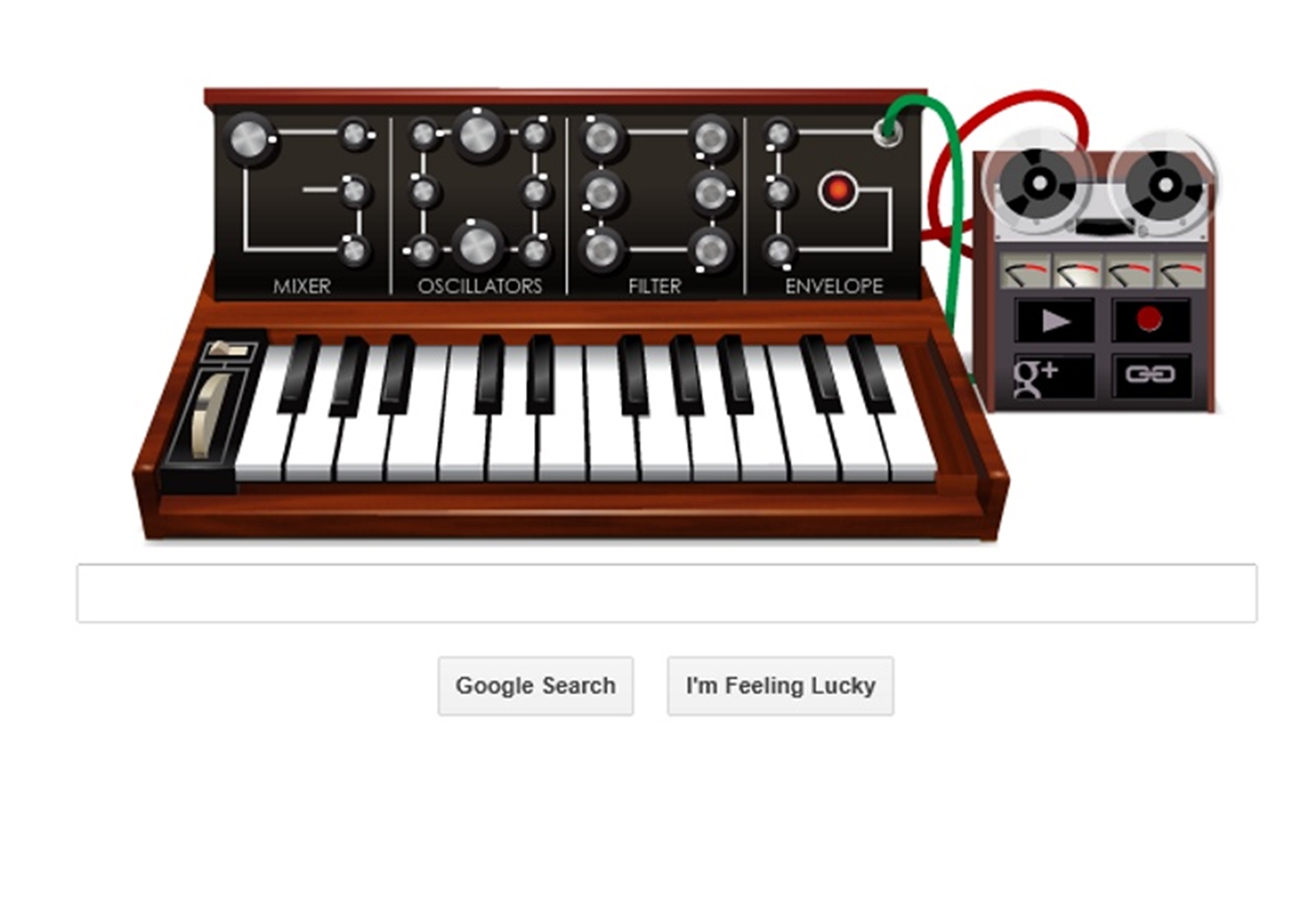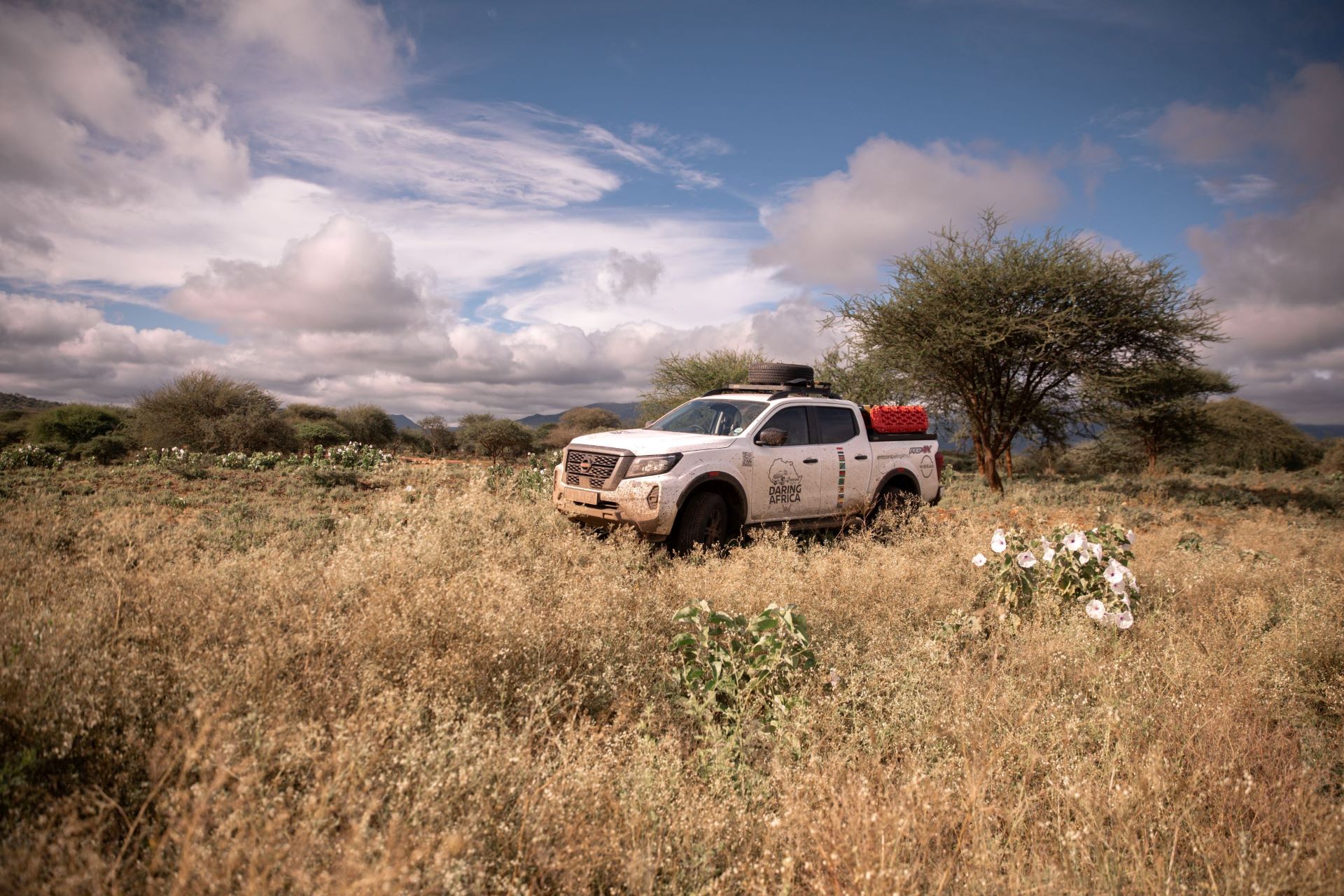Today 23 May 2012 if you visit the Google homepage you will see the “Google Doodle celebrating the life of Robert Moog, more widely known as “Bob Moog”. Bob Moog was known for his Moog Synthesizer Invention. He was one of the pioneers in Electronic Music. The Google Doodle for Bob Moog is one of the most detailed and interactive Google doodles that we have seen so far.

The Google Bob Moog doodle of the “Moog Synthesizer” is a duplicate of the invention by Moog and allows you to compose your own music on the “Moog Synthesizer” and also allow you to share your composition with friends via the Google+ link on the Doodle.
What is today’s Google Doodle about

“Screenshot of the Bob Moog Synthesizer Google Doodle”
Usually Google provides a direct link from the Google Doodle to the person or holiday that Google is remembering and honoring with their Google Doodle. In the case of “Bob Moog” there is a link. You have to click on the “Play” button inside the Google Doodle before you will see the link to “Robert Moog’s 78th Birthday” which will direct you to more information about “Bob Moog”.
About Bob Moog
A native of New York City, Moog attended the Bronx High School of Science in New York, graduating in 1952. Moog earned a bachelor’s degree in physics from Queens College, New York in 1957, another in electrical engineering from Columbia University, and a Ph.D. in engineering physics from Cornell University.
Moog’s awards include honorary doctorates from Polytechnic Institute of New York University (New York City) and Lycoming College (Williamsport, Pennsylvania) During his lifetime, Moog founded two companies for manufacturing electronic musical instruments. He also worked as a consultant and vice president for new product research at Kurzweil Music Systems from 1984 to 1988, helping to develop the Kurzweil K2000. He spent the early 1990s as a research professor of music at the University of North Carolina at Asheville.
Moog received a Grammy Trustees Award for lifetime achievement in 1970. In 2002, Moog was honored with a Special Merit/Technical Grammy Award, and an honorary doctorate degree from Berklee College of Music.
The Moog synthesizer was one of the first widely used electronic musical instruments. Early developmental work on the components of the synthesizer occurred at the Columbia-Princeton Electronic Music Center, now the Computer Music Center. While there, Moog developed the voltage controlled oscillators, ADSR envelope generators, and other synthesizer modules with composer Herbert Deutsch. Moog created the first voltage-controlled subtractive synthesizer to utilize a keyboard as a controller and demonstrated it at the AES convention in 1964.
In 1966, Moog filed a patent application for his unique low-pass filter U.S. Patent 3,475,623, which issued in October 1969. He held several dozen patents.[1] Moog employed his theremin company (R. A. Moog Co., which would later become Moog Music) to manufacture and market his synthesizers. Unlike the few other 1960s synthesizer manufacturers, Moog shipped a piano-style keyboard as the standard user interface to his synthesizers. Moog also established standards for analog synthesizer control interfacing, with a logarithmic one volt-per-octave pitch control and a separate pulse triggering signal.
The first Moog instruments were modular synthesizers. In 1971 Moog Music began production of the Minimoog Model D which was among the first widely available, portable and relatively affordable synthesizers. One of Moog’s earliest musical customers was Wendy Carlos whom he credits with providing feedback that was valuable to the further development of Moog synthesizers. Through his involvement in electronic music, Moog developed close professional relationships with artists such as Don Buchla, Keith Emerson, Rick Wakeman, John Cage, Gershon Kingsley, Clara Rockmore, and Pamelia Kurstin. In a 2000 interview, Moog said “I’m an engineer. I see myself as a toolmaker and the musicians are my customers. They use my tools.” – Source Wikipedia
How does the Google Doodle Bob Moog Electric Synthesizer Work?
If you want to create your own music on the Google Doodle Bob Moog Synthesizer you can use the keyboard, mixer, filters and oscillators on the Bob Moog Synthesizer. Remember to click the “Record” button, this will record your song and allow you to share it with friends. Use the Google+ Button to share your recording with friends on Google+ or copy the direct link to your recording from the “link button”.

Share your Bob Moog Synthesizer music
If you have composed some music on the Google Doodle Bob Moog Synthesizer you can share the link in the comments section below.
https://www.youtube.com/watch?v=1yqnuvOUC-Q


